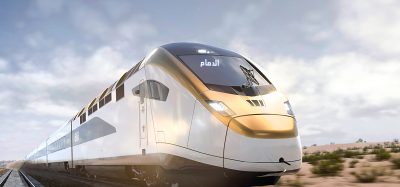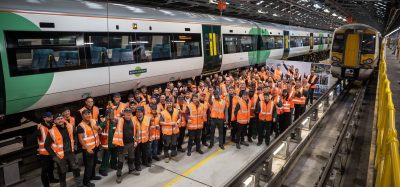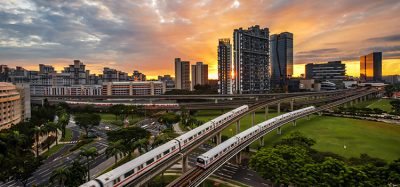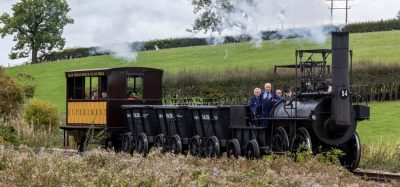Digitalisation of railway infrastructure: A programme to strengthen the system competitiveness
Posted: 1 November 2017 | voestalpine | No comments yet
Jochen Holzfeind, CTO of voestalpine VAE, Oliver Kraft, CEO of voestalpine BWG, and Martin Platzer, Senior Vice President of Marketing at voestalpine Schienen jointly present a view of the future of super-efficient and highly digitalised railway track systems.
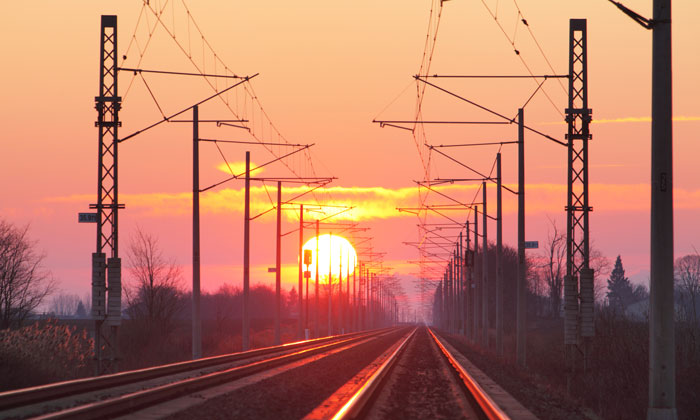

As a leading technology and capital goods group, voestalpine has a unique competence in railway infrastructure: that of premium rails, innovative turnout systems and intelligent signalling technology, all backed by a comprehensive range of value adding services. To this end voestalpine operates approximately 50 production sites in all major rail markets of the world. The new synergy platform developed by voestalpine Railway Systems offers integrated track solutions that substantially increase system availability while drastically reducing lifecycle cost. Moreover, the group lives up to its environmental pioneering role. At the same time, voestalpine’s digitalised technologies set the stage for future smart and cooperative asset management to maximise the lasting benefit of its partners and of the end-users.
The window to success: Data-based management
All modern industry sectors consider data to be of primary importance. It constitutes the raw material and the entrance gate to the critical review of existing business models and the redevelopment of even more customer benefit-oriented ones. Also in the rail infrastructure field, weekly or monthly reports with time-consuming and therefore process-inhibiting evaluation procedures must be replaced by real-time analysis and fact-based decision taking. This can be quite challenging for an industry in which low-price commodity suppliers often won – and still win – the day. In our lifetime, however, even railway infrastructure can benefit from machine to machine (M2M) communication and learning. In other words; business analytics must still be carried out with the necessary specialist knowhow, but not without the support of algorithms that select patterns or clusters from the data mass and in so doing, can also perfectly adapt to a given environment. Of course, intelligent asset management enables the possibility to create forecasts that are both reliable and cost-efficient, as they are necessary to determine reinvestment time and qualities as well as economically adjusted resource requirements for predictive maintenance.
A new wealth of commercially valuable and operationally beneficial applications
New possibilities, however, will always require new tools that are able to break down big data into smart data and ultimately smart solutions.
In this respect, track monitoring systems are essential elements in the drive to decrease railway system costs and remain competitive. They support infrastructure managers in optimising maintenance planning and industrial partners in optimising products. This includes not only vehicle and infrastructure monitoring, but also wheel-rail interaction monitoring and troubleshooting by informing maintainers about deviating and adverse situations before an impact on safety or availability occurs.
Condition Based Monitoring (CBM) alone requires the application of numerous disciplines, such as SCM (Switch Condition Monitoring), TMM (Track Movement Monitoring), TCM (Track Circuit Monitoring) for infrastructure and HWD (Hot Wheel Detection), WDD (Wheel Defect Detection), HBD (Hot Box Detection) and ABD (Acoustic Bearing Detection) for vehicle components. There are numerous application possibilities; therefore, the communication of knowledge and reduced response time to anticipated and actual failures will be invaluable in this respect.
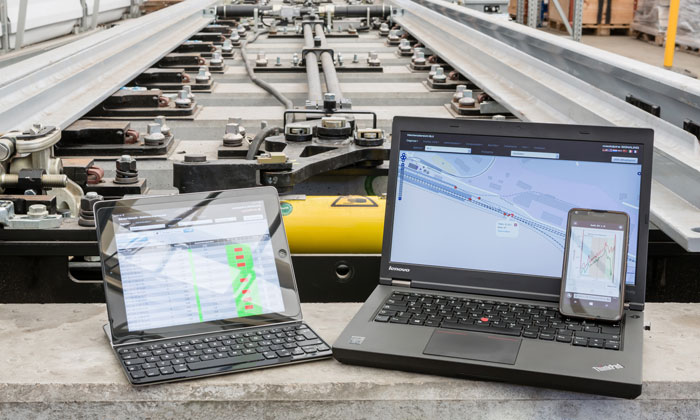

Intelligent monitoring tools are the basis for professional asset management
voestalpine Railway Systems: One step ahead
The main priority for railways – to ensure they play a leading role as a means of transportation in the 21st century – is being open to new technologies that are already successfully used by competitors. As such, voestalpine Railway Systems offers valuable services in the area of collection, provision and processing of condition, data and information along the value chain and the end-to-end process. Service areas include the following:
- Rails: Knowledge, products and solutions to minimise rail degradation (wear, corrugation and rolling contact fatigue); e.g. by means of premium and super-premium heat-treated steel grades
- Turnouts: Knowledge, products and solutions to fulfil all customer requirements in terms of availability, flexibility, performance and costs; e.g. heavy-haul turnouts with kinematic gauge optimisation (KGO) to increase lifetime and reduce the Total Cost of Ownership
- Signalling: Knowledge, economical and reliable products and solutions to increase the capacity and availability and deliver data to support track maintenance; e.g. by innovative locking and detection solutions, fully integrated into custom-tailored turnouts; intelligent turnout performance prognosis; and live vehicle data
- Fixations: Offering products for optimised track solutions for mixed traffic, heavy-haul and tramway business, including sleeper and fixation systems
- Services: Offering a multitude of customer specific tailor-made services and logistics for turnouts and rails (e.g. alignment planning, just-in-time transport of ultra-long rails, long-welded-rail strings and pre-assembled turnouts on own tilt wagons, maintenance, grinding, welding and coating)
- Sharing of knowledge: With customers and research institutions in its own training academies and competence centres.
This unique product and service portfolio combined with the overall systemic comprehension of railway and lifecycle considerations, makes voestalpine Railway Systems the first developer, manufacturer and supplier not only of innovative, but also integrated, infrastructure solutions worldwide.
The new voestalpine Railway Systems will further expand its team and skills in handling this new technology. As a complete system provider, the key to dealing with big data lies in the professional understanding, processing and interpretation of these new possibilities. The keen insight into component behaviours and system know-how forms the basis for use of these additional potentials.
However, this alone is not enough. Considering the fierce competition between the various transport modes it will also be necessary to activate cross-sectoral synergies from all ends. As a leading automotive, aerospace and railway infrastructure supplier, voestalpine is a premium partner to many of the mobility industry’s most demanding customers, making headway by its unique combination of materials and processing competence and their proven capability to be successful on the basis of advanced products and systems. New and innovative track solutions will be possible with the help of step change technologies without losing touch with the life blood of the railway system.
In any case it will be the mission of voestalpine Railway Systems to make every effort to contribute to the competitiveness of the sector by further close cooperation with European and national institutions, authorities, associations, customers and users.
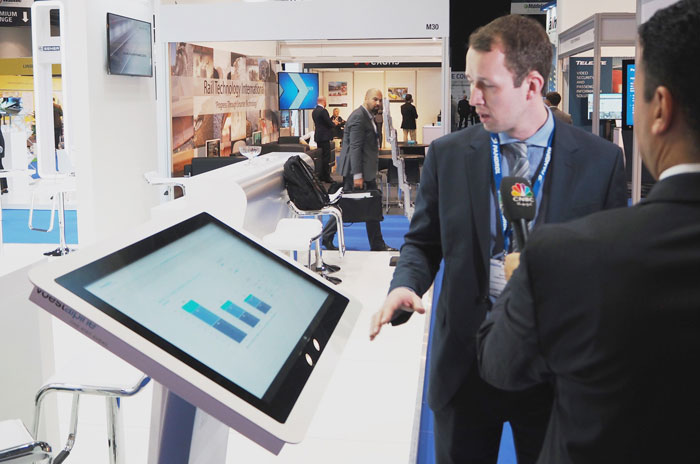

voestalpine presents its unique Interactive Rail LLC Tool worldwide
Reducing total cost includes protecting the environment
voestalpine’s unique Interactive Rail LCC Tool enables infrastructure managers to evaluate various rail related procurement and maintenance strategies as well as determine costs over the entire lifecycle. The database relates to voestalpine’s unique wealth of carefully measured experience from approximately 120 track tests performed around the world in all climatic conditions and for different rail traffic modes. It allows users to select a variety of parameters including the type of operation, track radius, load, rail grinding regime and rate of metal removal in order to select the ideal solution in terms of cost over the life of the rail.
It is already a commonly accepted fact that premium heat-treated rail steels ensure the longest service life along with lowest maintenance needs. In addition to this, voestalpine maintains that the substantial availability increase should always be accompanied by a significant reduction in the total cost.
Thus, the new tool calculates the key financial decision criteria, such as net present value, annuities and return on investment. However, even more can be done because the societally optimal solution goes beyond track performance and lifecycle cost. Consideration of ‘Corporate and Social Responsibility’ (CSR) factors – with special emphasis on indirect cost and ecological criteria – is vital to meet the societal challenge. Therefore, customers and interested professionals can interactively calculate not only the financial benefits but also CO2 savings.
One of the European lighthouse events in mobility ecological terms is the biennial Transport Research Arena (TRA), which takes place in one of the European capitals; next time in April 2018, in Vienna. The motto of TRA 2018 ‘a digital era for transport – solutions for society, economy and environment’ perfectly fits with voestalpine as it reflects the group’s basic positioning exactly. Its participation as a major sponsor will allow voestalpine Railway Systems to demonstrate the innovations and increased momentum of the European track and related digitalisation synergies: Its pioneering technology, top-quality manufacturing, and trend-setting customer benefit creations.
Summary: Rail infrastructure means track partnership
There are a number of suggestions to focus on going forward, including:
- Operators and system suppliers can only meet the challenges together: Automation through the use of electronics and IT will be followed by cross-linking on the basis of cyber physical systems (Industry 4.0).
- Primary focus: Boost network performance while substantially reducing lifecycle costs (maintenance regimes are the critical factor). This is only possible by consistent application of systemic solutions.
- World-class products and services are already available, but deployment is lagging behind: EU-wide technology projects such as Shift2Rail and the swift implementation of best-bidder oriented public procurement criteria (‘most economically advantageous tender’ (MEAT) criteria and/or best quality to price ratios) are expected to significantly accelerate market take-up.
- While lifecycle cost remains essential, in future CSR-criteria should also be addressed comprehensively for public rail infrastructure procurement (e.g. ecological factors).
Biography






Global Railway Review Autumn/ Winter Issue 2025
Welcome to 2025’s Autumn/ Winter issue of Global Railway Review!
The dynamism of our sector has never been more apparent, driven by technological leaps, evolving societal demands, and an urgent global imperative for sustainable solutions.
>>> Read the issue in full now! <<<
Issue
Related topics
Related organisations
voestalpine, voestalpine BWG, voestalpine Schienen, voestalpine VAE



